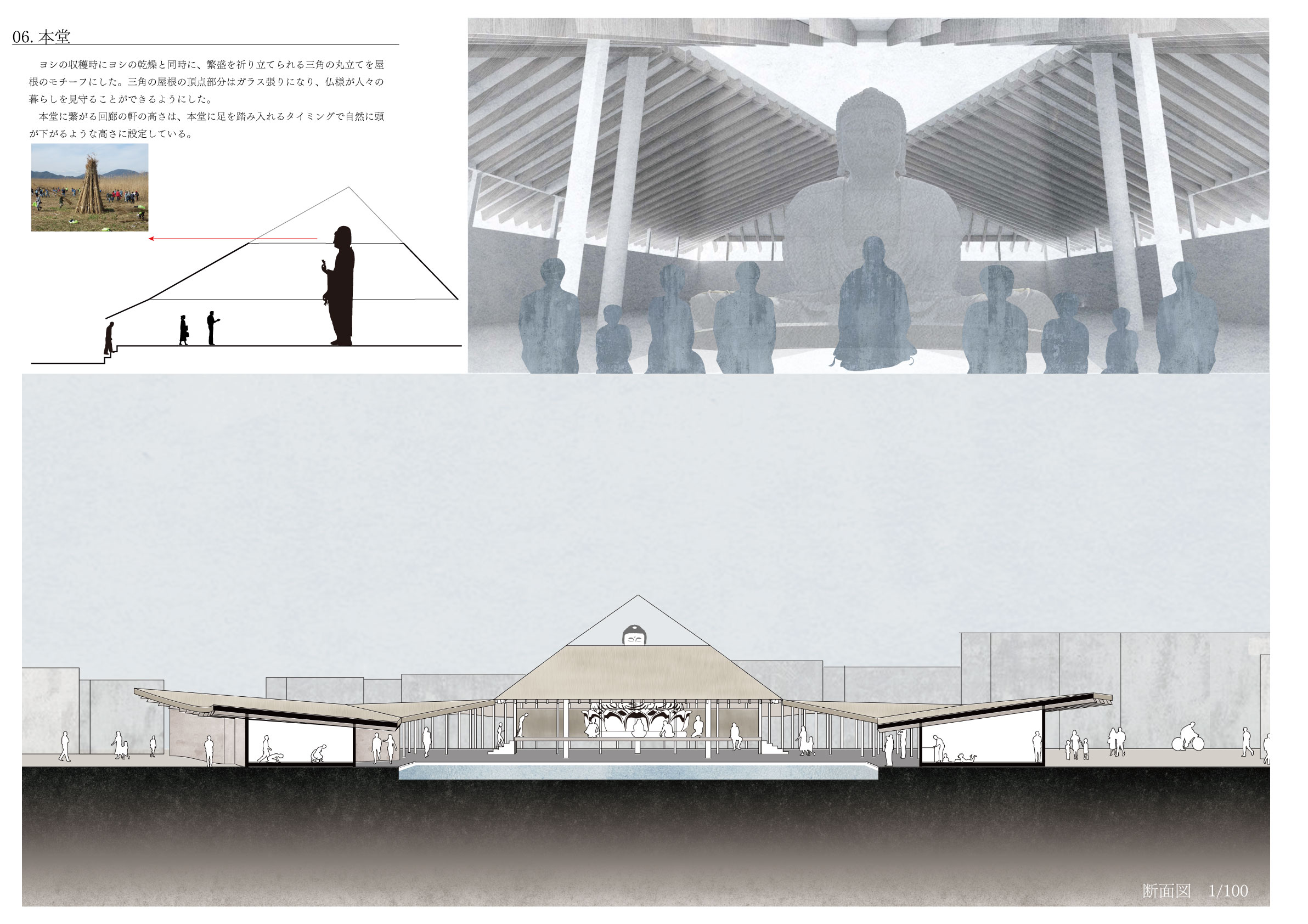水際の記憶 -ヨシの暮らしを継承する寺院- Memory of the water side -The temple succeeds to the living of the reed
森本龍 Ryu Morimoto
作品コンセプト
- JP
- EN
古来より日本各地に存在するお寺。お寺は仏像が祀られ、仏教の出家者が起居する場であり、特有の建築空間を有している。寺院建築を代表する空間の1つである回廊は、寺院建築のもつ聖と俗の境界構造を表現し、囲うことで中にあるものを守る。また、お寺は誰もが気軽に出入りできる場所で、地域コミュニティの中心である。ここでは文化や伝統が生まれ、受け継がれてきた。お寺には回廊の中にあるものを守り、継承する力がある。
対象敷地である西の湖周辺の地域では、ヨシが生い茂る水辺の風景が美しい。ヨシは食糧や屋根、火祭りの松明など、古来より多様な形で人の暮らしと関わってきた。毎年のヨシ刈り、ヨシ原の火入れは早春の風物詩であり、これがヨシ原の美しい風景を継承している。
しかし、現在ではヨシと暮らしが離れつつあり、ヨシの風景が失われてきている。
以上により本計画では、お寺でヨシの暮らしを囲うことで、ヨシ文化の継承と風景の保存を図る。
Temples have existed in various parts of Japan since ancient times. Temples are places where Buddhist statues are enshrined, ordained Buddhists reside. They have unique architectural spaces. The cloister, one of the representative spaces of temple architecture, expresses the boundary structure between the sacred and the secular and protects what is inside by enclosing it. In addition, temples are places where anyone can come and go. They are the center of local communities. That is where culture and tradition are born and passed on. Temples have the power to protect and pass on what is in the corridor.
In the lake in the west, which is the subject site, there is a beautiful waterfront landscape with reeds growing thickly. Since ancient times, reeds have been associated with people's lives in various ways, such as food, roofs, and torches for fire festivals. The annual cutting of reeds and lighting of reed fields is a traditional event in early spring. That has helped preserve the beautiful scenery of the reed fields.
However, nowadays, the reeds and people's lives are becoming separated. Therefore, the reed landscape is lost.
Therefore, this project aims to preserve the reed culture and landscape by enclosing the reed life in the temple.







